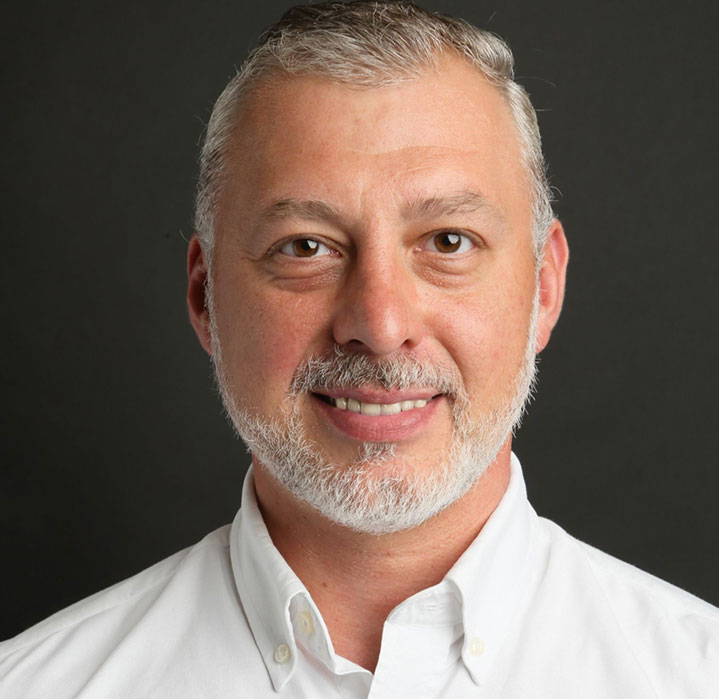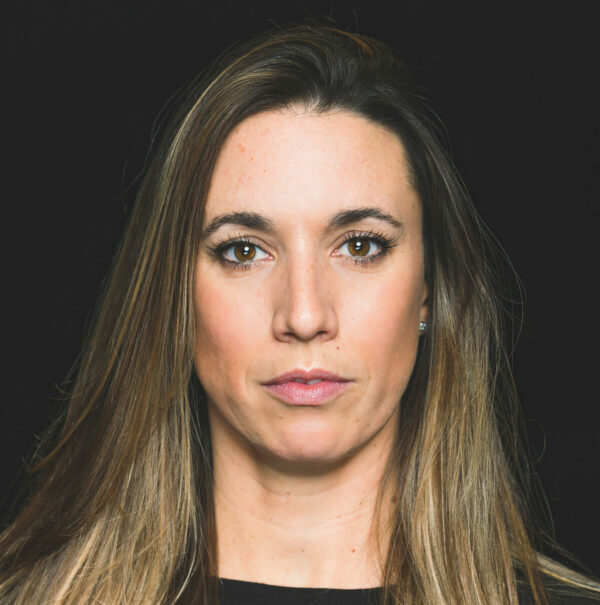Open Space
Peer to Peer Warm-up
We have reserved a designated space for students to converge, connect, and collaboratively prepare their bodies for a day of dance. Within this environment, fellow students have the opportunity to encounter one another, discover commonalities, share their personal practices, and engage in the exchange of knowledge.

Krzysztof Zawadzki
Ballet Academy, HMTM
Krzysztof Zawadzki was born in Poland and received his dance education at the State Ballet School in Lodz. This was followed by engagements as a soloist at the State Theatre in Lodz, the State Theatre in Augsburg, the State Theatre on Gärtnerplatz in Munich and the Bayerisches Staatsballett. Zawadzki received his diploma as a ballet teacher at the Munich University of Music and Theatre under Prof. Alex Ursuliak. He received further training at the Waganowa Ballet Academy in St. Petersburg, Russia.
Classical Training
In my classes, it is crucial for me to instill in the students not only a deep passion for ballet but also essential aspects such as precise technique, conscious coordination, endurance, and strength. Discipline and perseverance naturally play a vital role.

David Valencia
Ballett des Staatstheaters am Gärtnerplatz
David Valencia received his training at the Incolballet in Santiago de Cali in Colombia. While still a student, he was awarded second prize at the International Ballet Festival “La Habana”. After his studies, he continued his training in modern dance, ethnic dances, tango, singing and acting. After his first engagements in Lausanne, Chemnitz and Munich, he danced in the Gauthier Dance Company at the Theaterhaus Stuttgart and at the Anhaltisches Theater in Dessau. Since the 2015/2016 season he has been a member of the ballet of the Staatstheater am Gärtnerplatz and has also created several of his own choreographies, including: in the Munich art area.
Contemporary Training
The main goal of the training/workshop is to introduce different movement qualities and physicalities in demand by contemporary choreographers. Starting with the alignment of the bone structure and identifying the force of gravity on our body and consciousness, followed by the introduction of a specific awareness to the respiratory system, and how this natural action has a big impact on our body and movements. Finally, we will intensify the muscular engagement, differentiate muscle tones and their function in movement. In around 12 exercises we will insert these three experiences in floor elements and rhythmical patterns that help the dynamic of the training.

Isaac Spencer
Hochschule für Musik und Darstellende Kunst Frankfurt
Isaac Spencer is interim professor for ballet techniques in the BA dance department of the Frankfurt University of Music and Performing Arts since September 2021. He worked as a professional dancer with Cullberg Ballet, Gothenburg Opera Dance Company, and Hubbard Street Dance Chicago. Since 2011, he has been active in the free scene throughout Germany and Sweden as dancer, choreographer, rehearsal director, and mentor. He earned a Bachelor of Fine Arts from the Juilliard School in 2004 and was recipient of the Princess Grace Award. Since 2013 he serves on the board of directors for Milvus Artistic Research Center (MARC) in Sweden.
Ballet Techniques
Students will learn tools and practice skills in order to change habitual movement patterns, opening up the potential for other coordinations, musicality, and flow. Areas of particular focus include placement, anatomical function, identification of directions in space and movement pathways in the body. Emphasis on musicality throughout the class serves to promote varying rhythmical activity, pumping blood throughout the body to ensure flexibility and strength, and also to invite interpretation and expression while moving.

Rita Barão Soares
Ballet Academy, HMTM / Ballett des Staatstheaters am Gärtnerplatz
Rita Barão Soares trained at the Dance Academy in Setubal (Portugal) and joined the contemporary dance company there in 1997. This was followed by engagements with the Portuguese Contemporary Dance Company, the Karlsruhe Ballet and from 2003-2019 with the ballet company of the Staatstheater am Gärtnerplatz. As a dancer, she has worked with choreographers such as Gustavo Ramirez Sansano, Christian Spuck, Jiří Kylián, Itzik Galili, Jo Strømgren, Marco Goecke and Christopher Roman. After various freelance engagements as a choreographic assistant, she has been working as a choreographic assistant and rehearsal director at the Gärtnerplatztheater since 2019 and has been a teacher for modern dance at the HMTM Ballet Academy since 2021.
Classical Training for Contemporary Dancers
I developed this ballet class expressly to address the needs of the everyday routine of professional contemporary dancers. It centers on musicality, coordination, and the simple pleasure of movement found in ballet. The class is informed by the various experiences, methods, and teachers I have encountered during many years active in the dance field, integrating elements of modern dance and release techniques. Participants are encouraged to cultivate confidence while emphasizing suspensions and focusing on gaining momentum through conscious breath and musical phrasing.

Natalia Hoffmann Sitnikova
Ballet Academy, HMTM
Born in Russia, Natalia Hoffmann-Sitnikova studied at Perm Ballet Academy. She graduated in 1985 and joined Perm Ballet Theater (Russia). There she was promoted to soloist in 1987. In 1992 she moved to Germany and joined Bonn Opera and Ballet Theater. Between 1997 and 2012 she was a soloist with Dutch National Ballet. She performed leading roles in several productions and collaborated with renowned choreographers. While still working as a dancer Natalia Hoffmann-Sitnikova was also teaching, coaching and assisting in diverse new choreographic works at Het National Ballet and abroad. Since 2012 Hoffmann is teacher at Ballet Academy at University of Music and Performing Art Munich.
Classical Training
This training begins by introducing a vocabulary of steps and sequences during the barre work, which is subsequently integrated into center exercises. There is a strong emphasis on creating step combinations and musical phrasing to train dancers in fast coordination and flawless technique, all while providing space for their artistic development.
Feldenkrais
The Feldenkrais Method is a work that gives agency to the artist through self-directed choice making. It redefines our habits by aligning our intentions through our actions, giving clarity to our thoughts and specificity to our movement. The work enhances our state of presence, gives us access to our creativity and develops our capacity for connection, leaving us with a remarkable sense of well-being.

Ami Shulman
Freelance lecturer
Contemporary Training by
Ami Shulman teaches a highly dynamic class that integrates the floor as an essential component for exploring full body connectivity and proprioceptive awareness. Her teachings focus on the efficiency and clarity of movement, which liberates the form and allows for a deeper range of physical expression. This approach fosters the movement potential of the individual, promoting somatic awareness while expanding the interpretive possibilities of the performer.
Feldenkrais
The Feldenkrais Method is a work that gives agency to the artist through self-directed choice making. It redefines our habits by aligning our intentions through our actions, giving clarity to our thoughts and specificity to our movement. The work enhances our state of presence, gives us access to our creativity and develops our capacity for connection, leaving us with a remarkable sense of well-being.
Classical Training by Agnès Noltenius
Akademie des Tanzes der Staatlichen Hochschule für Musik und Darstellende Kunst Mannheim
The classical training is suitable for all levels and for students with different backgrounds. The focus is on the relationship to space, work and coordination of the torso and arms.

Keith Morino
Canada’s National Ballet School
A graduate of Canada‘s National Ballet School (NBS), Keith’s professional dance career was principally based in Europe, dancing with NDT II, Ramon Oller in Spain, and in a variety of other dance projects. He also explored choreography for dance, theatre and opera, as well as teaching in different European companies and conservatories. This included the Professional Dance Conservatory of Barcelona (EESA/CPD), where he ultimately served as Artistic Director from 2009 – 2017. Keith became a certified Gaga teacher in 2020, and is currently a full time member of the artistic staff at NBS in Toronto.
Gaga / dancers
Gaga is the movement language developed by Ohad Naharin throughout many years, parallel to his work as a world-renowned choreographer. Gaga classes are predicated on a deep activation of the body and physical sensations. We provide a framework for discovering and strengthening the body and adding flexibility, stamina, agility, and skills including coordination and efficiency while stimulating the senses and the imagination. Participants awaken numb areas, increase their awareness of habits, and improve their efficiency of movement inside multilayered tasks, and they are encouraged to connect to pleasure inside moments of effort. The research of Gaga is in a continual process of evolution, and the classes vary and develop accordingly.
Contemporary Training
Keith Morino offers an opportunity to explore movement quality and interpretation through clear form and musicality. Agency and choice are priorities while developing a clear perception of our physicality and interpretational talents. Influenced by his ballet training, professional dance experience and his training as a Gaga instructor, his classes follow modern dance principles such as use of space, gravity, and oppositional forces. The class is structured by a short warm up, followed by one or two technique exercises and a short performative variation.